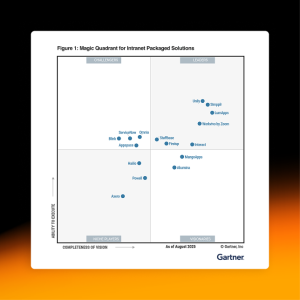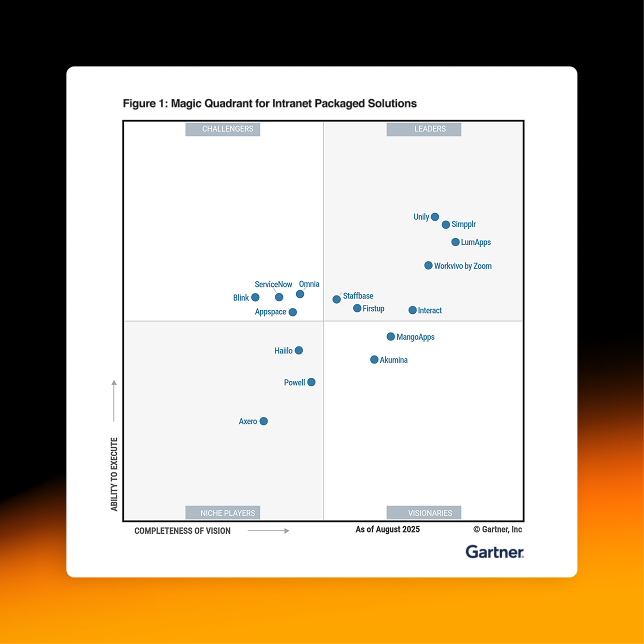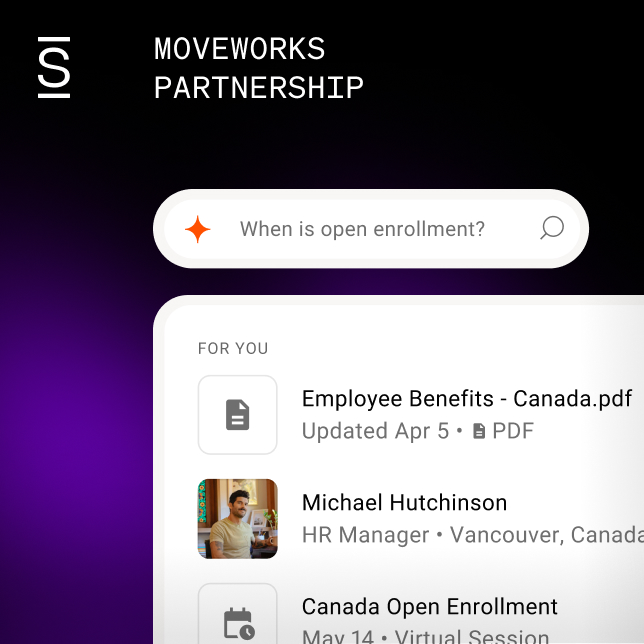- 1 What is leadership?
- 2 Leadership definition
- 3 Management vs leadership: What’s the difference
- 4 What is a leader?
- 5 Why leadership is important
- 6 What makes a good leader?
- 7 Qualities of a great leader
- 8 How to become a better leader
- 9 The challenges of leadership
- 10 Enhance your company’s leadership with Simpplr
What is leadership?
Some things never change, and good leadership is one of them. Way back in the 5th century BC, Sun Tzu, a Chinese general and military strategist, said, “A leader is best when people barely know he exists; when his work is done, his aim fulfilled, they will say: we did it ourselves.”
Fast forward to today, and we have this quote from Adena Friedman, CEO of Nasdaq: “Empowering those around you to be heard and valued makes the difference between a leader who simply instructs and one who inspires.”
While it’s clear to see that the basic principles of good leadership haven’t changed over the last millennia, leadership challenges are mostly very different today, and we have different attitudes, resources, and environments to meet those. Let’s find out what leadership actually is, why it’s essential, and how best to develop leadership skills for the modern workplace.
Leadership definition
Beyond the straightforward definition of leadership as the action of leading a team or organization, business leadership has everything to do with the ability of a person, or persons, to guide, influence and develop employees.
Although the term often refers to the title, seniority, or hierarchical rank, leadership is a skill anyone in any organization can acquire and improve over time.
Leadership is not management. Where leadership is centered on motivating, influencing, and empowering people, management is focused on the controlled direction of employees to achieve a specific organizational goal. A leader can be a good manager, and vice versa, although it doesn’t necessarily follow.
Management vs leadership: What’s the difference
Management and leadership are distinct yet complementary roles within an organization, each focusing on different aspects of achieving goals. The key difference between them is:
- Management emphasizes organization and efficiency, ensuring that day-to-day operations run smoothly.
- Leadership focuses on inspiring and motivating people to drive change and innovation.
What is a leader?
Simply put, a leader can be defined in hundreds of ways. They are the one in front, the general, the commander, the head of the group, the guide, the captain, the one with authority, the one who goes first, and many more.
Today’s modern, effective, respected business leader, however, is less about being in charge and more about interacting with workers so that they are inspired, motivated, and energized to take action on their own.

Why leadership is important
Strong leadership drives a good employee experience by making workers feel valued and inspired. This benefits the organization as a whole by attracting top talent, boosting employee retention rates, and driving productivity.
Good leadership also results in increased efficiency by encouraging top teamwork and directing and guiding employees in the mutual pursuit of company goals. Through strong leadership, employees’ strengths can be identified, observed, and applied for the company to run as collaboratively and profitably as possible.
What makes a good leader?
At the very least, a good leader is emotionally intelligent, with a finely tuned social instinct, empathetic, compassionate, open-minded, and tolerant. They are a good listener with a well-developed sense of humor and uphold the values and ethics of their company, including diversity, equity, and inclusion. Other areas include:
Vision
A great leader looks to the future. They understand the trajectory of the company’s mission, brand, and goals and why and how they will be achieved. Clear, proactive internal communication links this vision to reality and the practicalities of how teams and individuals get their work done.
Good leaders will continually be aware of how the company vision might evolve in the future and effectively communicate around this. They will innovate as opportunities for development occur and keep a sharp eye on competitors doing the same thing to survive in future markets.
Employees must see and understand this vision and their part in its development. Quality, two-way communication between leaders and employees is vital to striking a balance between passion and practicality and maintaining enthusiasm and commitment while the work gets done.
Teamwork
Strong leaders are top team players who know they cannot succeed without the input of others. Awareness of the individual strengths of each team member enables a leader to delegate tasks effectively and to motivate, recognize and reward workers, thus driving high rates of employee engagement. Respect, trust, and transparency at the team level are essential, as well as the free exchange of ideas and opinions and equal opportunities to get involved with decision-making and problem-solving.
Guidance
With guidance and support, a strong leader will achieve their organization’s goals with maximum efficiency, helped by motivated, enthusiastic, committed employees. Teams will thrive on the confidence they gain from having the right backing and assistance to work collaboratively toward achieving company goals with the correct tools, resources, and skills required for the job.
Flexibility
Flexibility is an essential quality for a good leader. In the past, workers came to a central, physical office space where it was easier for a leader to keep an eye on things or show themselves as available for various reasons. Today, a good leader must adapt to hybrid workforce environments and global distribution of employees, rapid digital transformation, empowerment of others, cultural diversity, employees’ need for a healthy work-life balance, and much more. Hybrid workforce leadership requires new approaches because the digital workplace is less about hours spent in the office and more about outputs and results.
Qualities of a great leader
The qualities and skills needed by a great leader go hand-in-hand, and here are the most important ones:
- Communication – excellent communication skills are vital to motivate and guide employees, align with company goals, and reinforcing company culture.
- Authenticity – show honest enthusiasm and commitment to the company mission, brand, and achieving company goals.
- Integrity – always do what is right regardless of personal or organizational consequences.
- Decisiveness – to be effective in a leadership role, take risks, make decisions and be accountable.
- Empowerment – train and support employees through career development initiatives so they can grow, and encourage them to think strategically, innovate and act on their own.
- Character – good leaders are likable. They are friendly, approachable, ethical, polite, and sincere.
- Loyalty – trust and transparency- foster loyalty between leaders and employees.
How to become a better leader
To become a better leader, developing a particular attitude or psychology and acquiring the relevant skillset is essential. It helps to be an active listener and wide open to ideas and possibilities for change. Most great leaders are made, not born, and the skills required to lead effectively can be developed and adapted over time. There is no typical personality, executive position, or career direction associated with a strong leader, so how do we know which qualities will get us going in the direction of excellence?
Be inspirational
Inspire, influence, and help others to achieve the best of their abilities. Great leaders make it a priority to uplift colleagues and produce more great leaders.
Communicate brilliantly
Top quality, clear, consistent internal communications are paramount to good leadership. Be sure to have a leading brand intranet to suit requirements, share information and news and receive feedback.
Drive change
Strong leadership is all about achieving goals through creation and innovation and sustaining change to benefit individuals and the company as a whole.
Empower people
Encourage people to embrace opportunities to develop and grow independently. Delegate with confidence and trust employees to step up to the mark.
Be purposeful
Make decisions and set goals to foster greater focus, resilience, and strength and to avoid stagnation.

The challenges of leadership
Even the most outstanding leader, with the best leadership qualities imaginable, has challenges. Let’s look at some of the big ones and what to do about them.
Staying motivated
It’s easy to stay motivated when things are going well. The real test comes with a failure or crisis, and a good leader will show his true mettle then. It’s not a question of excellent leadership performance in good times but rather how a leader performs in bad times and keeps himself and the team motivated.
Balancing priorities
There’s never only one priority in a dynamic organization. Leaders need to constantly multi-task across many priorities. It’s essential to keep an open mind because a leader may not see a particular issue as a priority, but their team may believe otherwise. Communicate, encourage regular feedback, and listen properly to what employees say.
Developing future leaders
This is vital to being a good leader, but finding a balance can be tricky. Future leaders can become over-competitive or be head-hunted by an external competitor. Proactive mentorship is wise, and be sure to set clear boundaries and discuss expectations.
Leading by example
We are only human, but if a leader takes liberties, this will lead to a breakdown in trust and employee loyalty will be compromised. If a mistake has been made, be accountable, apologise and start afresh.
Being accountable
It’s hard to admit to failure. The best leaders take courage, dig deep, and take it on the chin. Employees will feel motivated to pick up the pieces and start over if responsibility for mistakes is shared.
Maintaining authenticity
In a way, maintaining authenticity is everything to everyone, and it can be a heavy weight to carry. Being consistent, approachable, friendly, and a good listener will take you a long way.
Staying confident
Failures, mistakes, losses, and more can deal daily blows to the most confident leader, given that ‘it never rains, but it pours.’ It isn’t easy to do, but maintaining purpose, decisiveness, and keeping your eyes ahead on the goal will do wonders for confidence levels.
10 characteristics of bad leadership
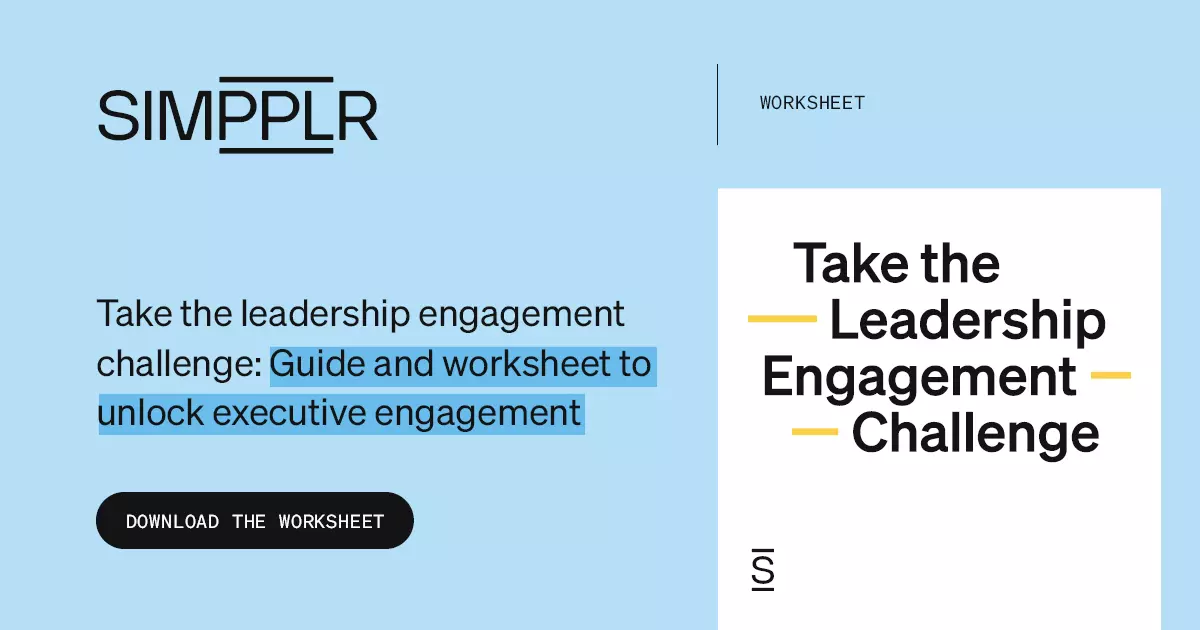
Enhance your company’s leadership with Simpplr
A company cannot be successful without good leaders to show the way. Top talent won’t be attracted to an organization with obscure goals, a low chance of advancement, poor communication, and a weak culture.
But, given the challenges a top leader must face, who would want to be that person? A good leader’s job is to inspire, encourage, drive change, promote creativity, empower others, and more while maintaining their motivation, authenticity, and confidence.
It helps to remember that good leadership is less of a one-and-done achievement and more of an ongoing process. While every business situation has wins and losses, the positive feelings around a good outcome for a leader and their team are second to none.
Earning and receiving respect does wonders for morale, and seeing colleagues develop and progress is motivating and satisfying. A competent, committed leader means a healthy company culture, excellent employee experience, and high productivity levels.
Learn how Simpplr can empower your company’s leaders at every level to energize employees and help reinforce your organization’s culture.
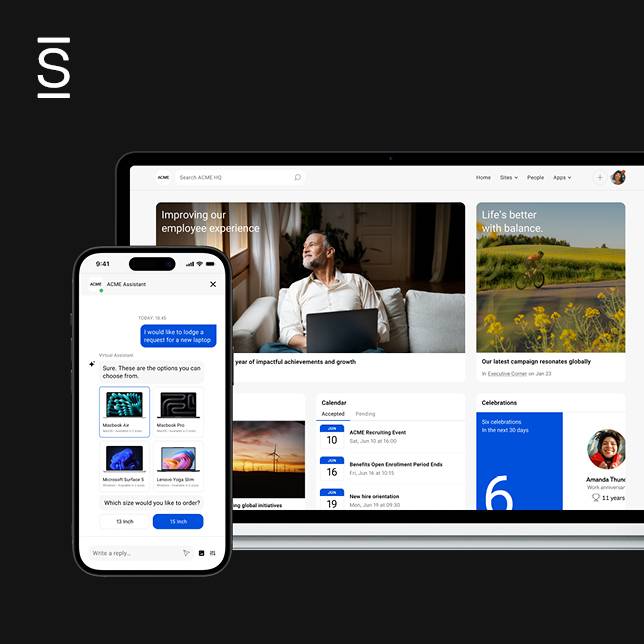
Watch a 5-minute demo
See how the Simpplr employee experience platform connects, engages and empowers your workforce.
- #1 Leader in the Gartner Magic Quadrant™
- 90%+ Employee adoption rate



